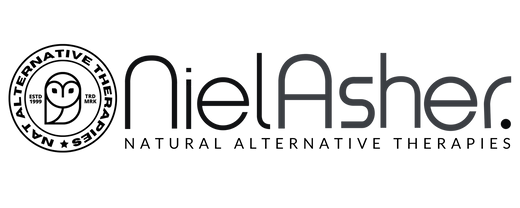Groin Adductor Injuries: From Understanding to Recovery
Understanding the Groin Adductor Muscles: A Comprehensive Guide
The groin adductor muscles play a crucial role in movement, stability, and overall lower-body functionality. Understanding their anatomy, common injuries, and treatment approaches can help prevent and manage groin strains effectively, whether you're an athlete or someone experiencing discomfort in this area.
Anatomy of the Groin Adductor Muscles
The adductor muscles are located on the inner thigh and are responsible for a range of important functions. This group includes:
- Adductor Brevis: Assists in hip adduction and stabilization.
- Adductor Longus: Plays a significant role in adduction and flexion of the thigh.
- Adductor Magnus: The largest adductor muscle, contributing to adduction, extension, and medial rotation of the thigh.
- Gracilis: A long, thin muscle that aids in adduction and knee flexion.
- Pectineus: Functions in adduction and flexion of the thigh and contributes to medial rotation.
These muscles work together to pull the leg toward the body's midline, stabilize the pelvis during movement, and support dynamic activities such as running, jumping, and sudden directional changes.

Groin Adductor Strains: Causes and Symptoms
Causes
Groin adductor strains occur when these muscles are overstretched or torn. They are common in sports requiring sudden starts, stops, or changes in direction, such as football, hockey, and basketball. However, they can also result from:
- Overuse or repetitive strain
- Insufficient warm-up or improper technique during physical activity
- Weak or imbalanced adductor muscles
- Previous groin injuries, which may predispose individuals to re-injury
Symptoms
The severity of symptoms depends on the extent of the strain and may include:
- Pain: Sudden, sharp pain in the groin area during activity.
- Sensations: A popping or snapping feeling at the time of injury.
- Tenderness: Ongoing pain or tenderness in the inner thigh and groin area.
- Mobility Issues: Reduced strength and limited range of motion in the affected leg.
- Swelling or Bruising: Visible swelling or discoloration, particularly in more severe cases.
Assessment and Diagnosis
Accurate diagnosis is key to effective treatment. A healthcare professional will typically conduct:
- Detailed History: Reviewing the nature of the injury, activities leading up to it, and previous medical history.
- Physical Examination: Assessing range of motion, strength, and pain during specific movements, such as adduction resistance.
- Imaging Tests: MRI or ultrasound may be recommended for severe injuries to confirm the extent of the damage.
Treatment: Rehabilitation and Soft Tissue Protocols
Effective treatment follows a phased approach, prioritizing pain management, mobility restoration, and prevention of re-injury.
Stage 1: Rest, Ice, Compression, and Elevation (RICE)
- Rest: Avoid activities that exacerbate pain to allow tissue healing.
- Ice: Apply ice packs for 15-20 minutes several times a day to reduce swelling.
- Compression: Use elastic bandages or wraps to minimize inflammation.
- Elevation: Keep the affected leg elevated to reduce swelling.
Stage 2: Physical Therapy
Once acute pain subsides, physical therapy focuses on:
- Flexibility: Gentle stretching exercises to prevent stiffness.
- Strengthening: Gradual introduction of resistance exercises targeting the adductor group.
- Balance and Proprioception: Exercises to restore coordination and stability.
Stage 3: Soft Tissue Treatment
Manual therapies can complement physical therapy:
- Massage: Relieves tension, promotes circulation, and aids recovery.
- Facilitated Stretching: Techniques such as those developed by Bob McAtee can enhance flexibility and alleviate discomfort.
- Myofascial Release: Addresses adhesions and scar tissue to improve muscle mobility.
Stage 4: Gradual Return to Activity
A structured plan for resuming activity ensures safe recovery:
- Begin with low-intensity activities and progress gradually.
- Focus on sport-specific drills under professional supervision.
- Monitor for any signs of discomfort or re-injury.
Prevention
Preventative measures can significantly reduce the risk of groin adductor strains:
- Regular Conditioning: Incorporate exercises that target adductor strength and flexibility.
- Warm-Up and Cool-Down: Perform dynamic stretches before activity and static stretches afterward.
- Proper Technique: Ensure correct form during exercises and sports.
- Muscle Balance: Strengthen surrounding muscles, including the core and abductors, to support the adductors.
Sample exercises include:
- Side lunges
- Adductor squeezes using a soft ball
- PNF stretching techniques
Conclusion
Groin adductor strains can be painful and limiting, but with proper care and attention, recovery is achievable. Early diagnosis, tailored rehabilitation plans, and a proactive approach to prevention are essential. Whether you're a professional athlete or someone recovering from a strain, understanding the anatomy and function of the groin adductor muscles is the first step toward effective management.
By prioritizing professional assessment, following evidence-based treatment protocols, and maintaining regular conditioning, you can reduce the risk of injury and support long-term mobility and strength. Recovery takes time, but with patience and the right approach, you can return to your desired activities stronger and more resilient than before.
References
- McAtee, B. (2007). Facilitated Stretching. Human Kinetics.
- Tyler, T. F., Nicholas, S. J., & Campbell, R. J. (2001). The association of hip strength and flexibility with the incidence of adductor muscle strains in professional ice hockey players. The American Journal of Sports Medicine, 29(2), 124-128.
- Holmich, P., & Thorborg, K. (2013). The role of physical therapy in the treatment of groin pain in athletes. British Journal of Sports Medicine, 47(12), 763-765.
- American Physical Therapy Association. (2020). Management of musculoskeletal injuries: Guidelines for groin and adductor strains.
- National Athletic Trainers' Association. (2018). Injury prevention and recovery for athletes.

Ready to take your practice to the next level?
Explore which continuing education course is right for you.














